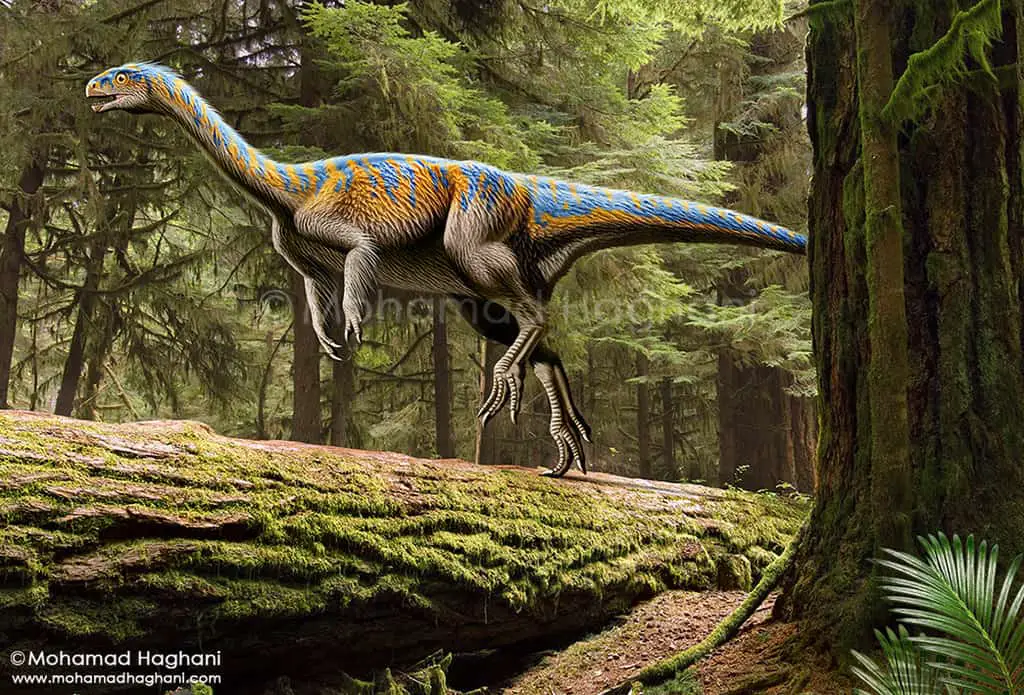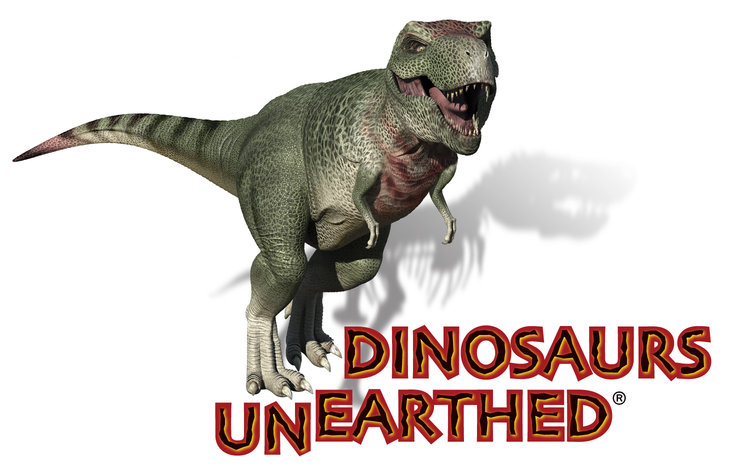Dinosaurs Unearthed!
A collection of fossil dinosaur skeletons. Clockwise from top left: Microraptor gui (a winged theropod),Apatosaurus louisae
(a giant sauropod), Edmontosaurus regalis (a duck-billed ornithopod), Triceratops horridus(a horned ceratopsian),
They didn’t. All birds are dinosaurs, and
they’re doing fine. If you mean non-avian dinosaurs, some of the smaller
ones may well have hung on for a long time and we just haven’t found
their fossils yet. But the big ones would probably all have been dead
within about six months of the Chicxulub asteroid strike.

The Chilesaurus
However, paleontologists Paul Barret and
Matthew Baron, have a different view on this dinosaur. They say that
instead of being the black sheep of the theropod family, this dinosaur
could actually be a connecting point between two groups of dinosaurs
that were thought to be distantly related.
 In order to understand the significance
of the Chilesaurus, you must first understand something about dinosaur
systematics. With the traditional understanding that has stood for over a
century, dinosaurs have been divided into two major subgroups. One
subgroup – the Saurischians
In order to understand the significance
of the Chilesaurus, you must first understand something about dinosaur
systematics. With the traditional understanding that has stood for over a
century, dinosaurs have been divided into two major subgroups. One
subgroup – the Saurischians

sauropodomorphs
– is made up of sauropodomorphs and theropods. The other subgroup – the ornithischians – includes the horned dinosaurs, armored dinosaurs, duckbill dinosaurs, and their kin. But then Barrett and Baron (along with David Norman) decided to shake things up earlier this year.

In their scheme, they suggest that traditional groupings have always been mixed up. In their new analysis, the theropod and ornithischian dinosaurs – previously only thought to be distantly related – actually came out as closely-related in a group they call Ornithoscelida. On the other hand, the sauropods and a group of early carnivorous dinosaurs known as Herrerasaurids, became the new members of the Saurischia.

Herrerasaurids
Put it this way. Previously, the Tyrannosaurus and Triceratops were thought to be as far apart on the dinosaur family tree as can be. However, this new family tree, proposed by Barrett, Baron, and Norman, brings them a lot nearer together, sharing a closer common ancestor than ever before.
This is where the Chilesaurus comes into
play. In a new paper, Barrett and Baron suggest that this dinosaur
bridges the anatomical gap that exists between the Ornithischian and
Theropod dinosaurs. This would help to explain why this dinosaur looks
so strange for a relative of the Allosaurus – it had common ancestry
with Theropods, but had features such as a beak and hip that put it
closer to the group of dinosaurs that contains the likes of the
Stegosaurus and Parasaurolophus. In other words, the Chilesaurus could
be a transitional dinosaur.sauropodomorphs
– is made up of sauropodomorphs and theropods. The other subgroup – the ornithischians – includes the horned dinosaurs, armored dinosaurs, duckbill dinosaurs, and their kin. But then Barrett and Baron (along with David Norman) decided to shake things up earlier this year.

In their scheme, they suggest that traditional groupings have always been mixed up. In their new analysis, the theropod and ornithischian dinosaurs – previously only thought to be distantly related – actually came out as closely-related in a group they call Ornithoscelida. On the other hand, the sauropods and a group of early carnivorous dinosaurs known as Herrerasaurids, became the new members of the Saurischia.

Herrerasaurids
Put it this way. Previously, the Tyrannosaurus and Triceratops were thought to be as far apart on the dinosaur family tree as can be. However, this new family tree, proposed by Barrett, Baron, and Norman, brings them a lot nearer together, sharing a closer common ancestor than ever before.
Tyrannosaurus
So, should we start rewriting dinosaur
books? That’s difficult to say. This new family tree is still being
heavily debated among paleontologists. There are still some anatomical
details that don’t add up. For example, air sacs are shared by Saurapod
and Theropod dinosaurs, but not the Ornithischians. Therefore, in the
traditional family tree, this would mean that the Saurapods and
Theropods are closely related, whereas in the new tree, air sacs would
have had to evolve twice. At the moment, we lack the fossils to know
which scenario is correct.Furthermore, the shape of this new family tree rests entirely on the anatomy of some of the first dinosaurs and their forerunners, some of which are complete head-scratchers themselves. For example, the Pisanosaurus was demoted from its status as one of the earliest Ornithischian dinosaurs to a group of lanky Protodinosaurs.
Protodinosaurs
Fossils that are relevant to the shape of the dinosaur family tree are still being discovered, scrutinized, and reshuffled.
This might all seem like too much information for the casual dinosaur fan, but these relationships offer us some insight into how dinosaurs evolved into the forms that humans have been fascinated with since we first discovered their bones. This debate on the dinosaur family tree is far from over, and though it may seem like a pretty innocuous dinosaur, this isn’t the last that we have heard of the Chilesaurus.
(Yashvir,Saahiba& Tejinder Kamboj in Dinosaur Park Carver Massachusetts)
Searched and Illustrated by Tejinder Kamboj


Comments
Post a Comment